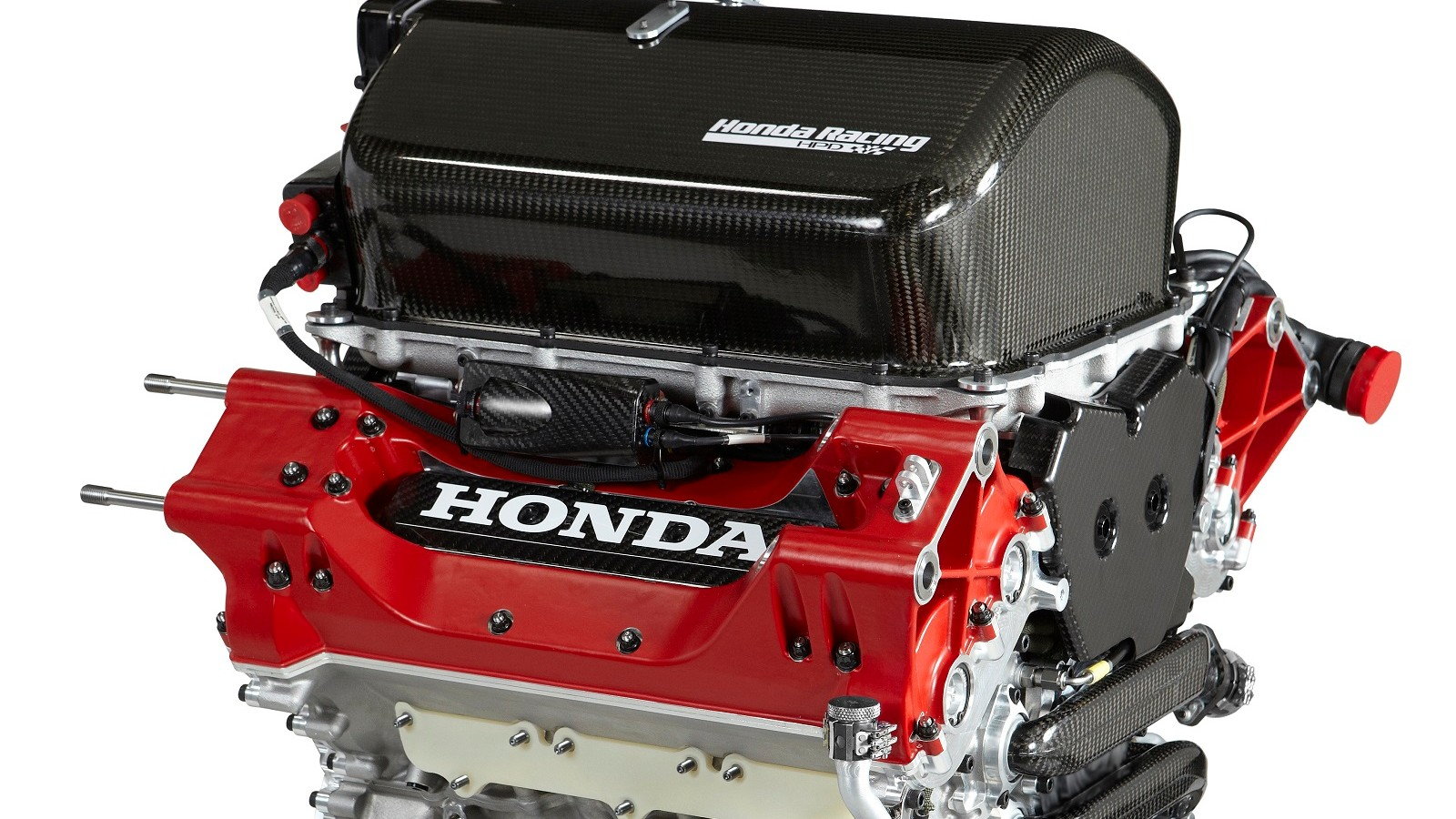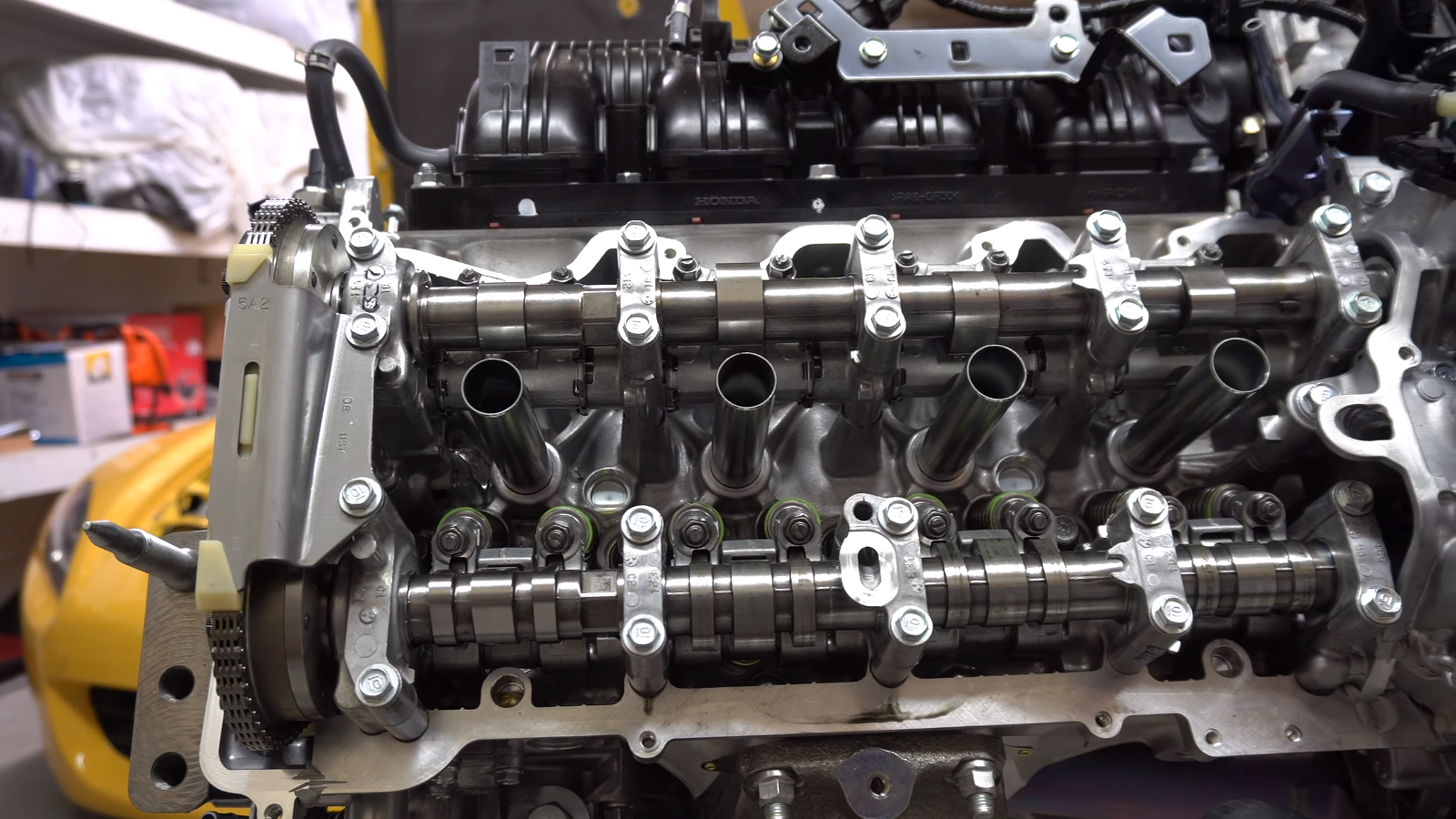Honda Somehow Got 700 HP From a 2.2-Liter Engine
Who needs monstrous motors when Honda can extract massive amounts of power from a tiny package?




















Who Needs Displacement?
An old saying tells us that "there's no replacement for displacement." But Honda, for one, doesn't really subscribe to that theory. They've been extracting power from small engines for a long time, but their latest IndyCar feat obviously tops them all.
Photos: Honda
Big Power, Small Package
Yes, we're talking about Honda's newest IndyCar powerplant, a 2.2-liter turbocharged V6 that produces an astounding 700 horsepower. Which is nearly 400 more than the production 2.0-liter four powering the Civic Type R. And that makes you wonder - how the heck did they manage to pull off this proverbial magic trick?
Photos: YouTube
>>Join the conversation about this special engine right here in the S2ki Forum!
Explain This
Thankfully, Jason Fenske of Engineering Explained is here to help us solve that little mystery. The (former) S2000 owner was obviously just as intrigued by this engine as we were, so he was keen to break it all down for us in digestible chunks.
Photos: YouTube
>>Join the conversation about this special engine right here in the S2ki Forum!
Breaking It Down
Fenske uses the Type R's 2.0-liter as a comparison for Honda's IndyCar wonder, which makes perfect sense. For starters, the Indy motor has two turbos (and two more cylinders) versus the single huffer on the street engine. And oh yea, that 700 horsepower figure is "conservative," as Honda won't say exactly how much power it produces for competitive reasons.
Photos: YouTube
>>Join the conversation about this special engine right here in the S2ki Forum!
Rev to the Moon
The racing motor also has a slightly higher redline than the street engine, of course. "One of the major differences between these two engines is how they rev," Fenske says. "The Indy engine revs up to 12,000 rpm, while the Type R engine is revving to 7,000 rpm."
Photos: YouTube
>>Join the conversation about this special engine right here in the S2ki Forum!
Slow Down to Speed Up
IndyCar rules limit maximum bore size to 95mm, so Fenske assumes that's what Honda is working with. That means the stroke is likely around 51.7mm. "That brings down piston speeds and allows you to reach these really high RPMs," Fenske explains. In this case, piston speed is assumed to be around 21.7 meters per second.
Photos: YouTube
>>Join the conversation about this special engine right here in the S2ki Forum!
Similar Yet Different
The Type R's 2.0, on the other hand, is a much more "square" engine. It has a bore of 86mm and a stroke of 85.9mm, which leads to a slightly slower 20.0 meters per second piston speed. "There are limitations to how fast combustion can occur and pistons can move," Fenske explains. "So while these have very different levels of rpm, the piston speeds are actually quite similar."
Photos: YouTube
>>Join the conversation about this special engine right here in the S2ki Forum!
Free Flowing
The IndyCar's larger bore also allows Honda to utilize larger valves. This allows them to "have better airflow within the engine," Fenske says. "Which is obviously very important when you're revving up to 12,000 rpm."
Photos: YouTube
>>Join the conversation about this special engine right here in the S2ki Forum!
Boost Matters
Then, of course, there's the matter of boost. In IndyCar, there is a different boost limit imposed upon each track. Depending on the track, Honda's 2.2 can utilize anywhere from 18.9 psi up to 23.9 psi. The Type R, on the other hand, makes peak power with 23.2 psi.
Photos: YouTube
>>Join the conversation about this special engine right here in the S2ki Forum!
More Power
So how in the world do these two seemingly similar engines make such varying levels of power? "Horsepower is a function of rpm," Fenske says. "So the fact that this has so many more power strokes occurring within a minute means it's able to make significantly more power." And of course, using E85 in IndyCar allows for a higher compression ratio and more timing.
Photos: YouTube
>>Join the conversation about this special engine right here in the S2ki Forum!
